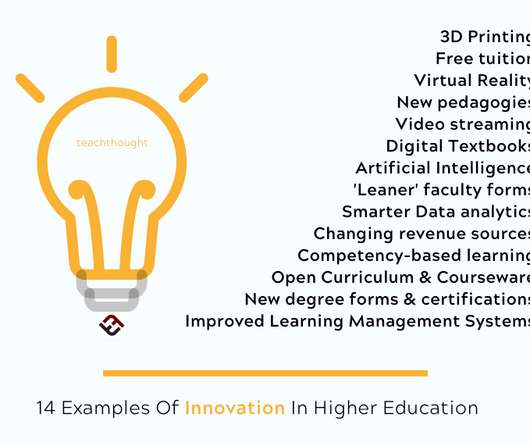14 Examples Of Innovation In Higher Education
TeachThought - Learn better.
MAY 12, 2020
Competency-Based Learning. Competency-Based Education is something I’m hearing more and more about, which is neither bad nor good, but worth understanding more carefully. There is so much great content already published and accessible, that curation matters as much as creation.















Let's personalize your content